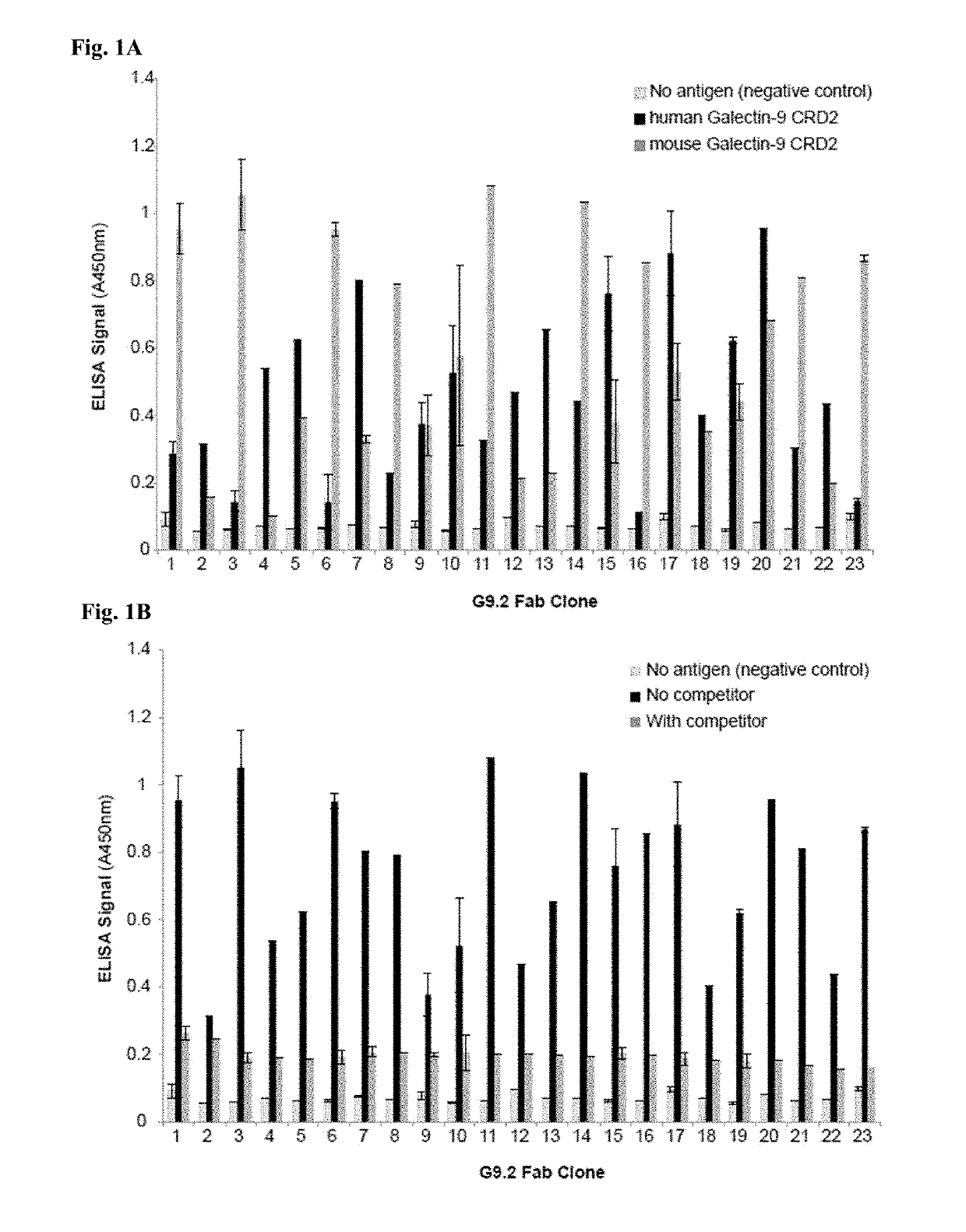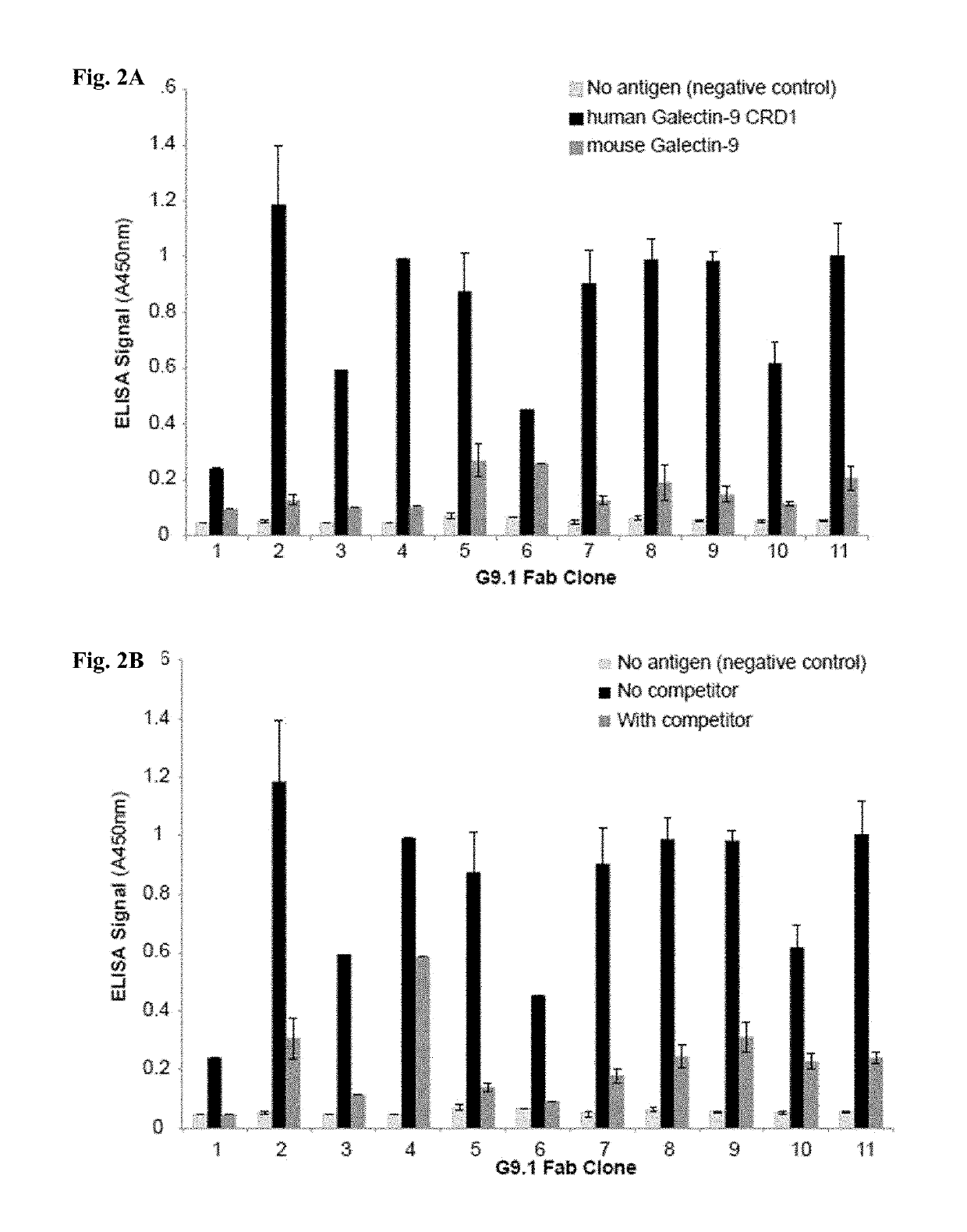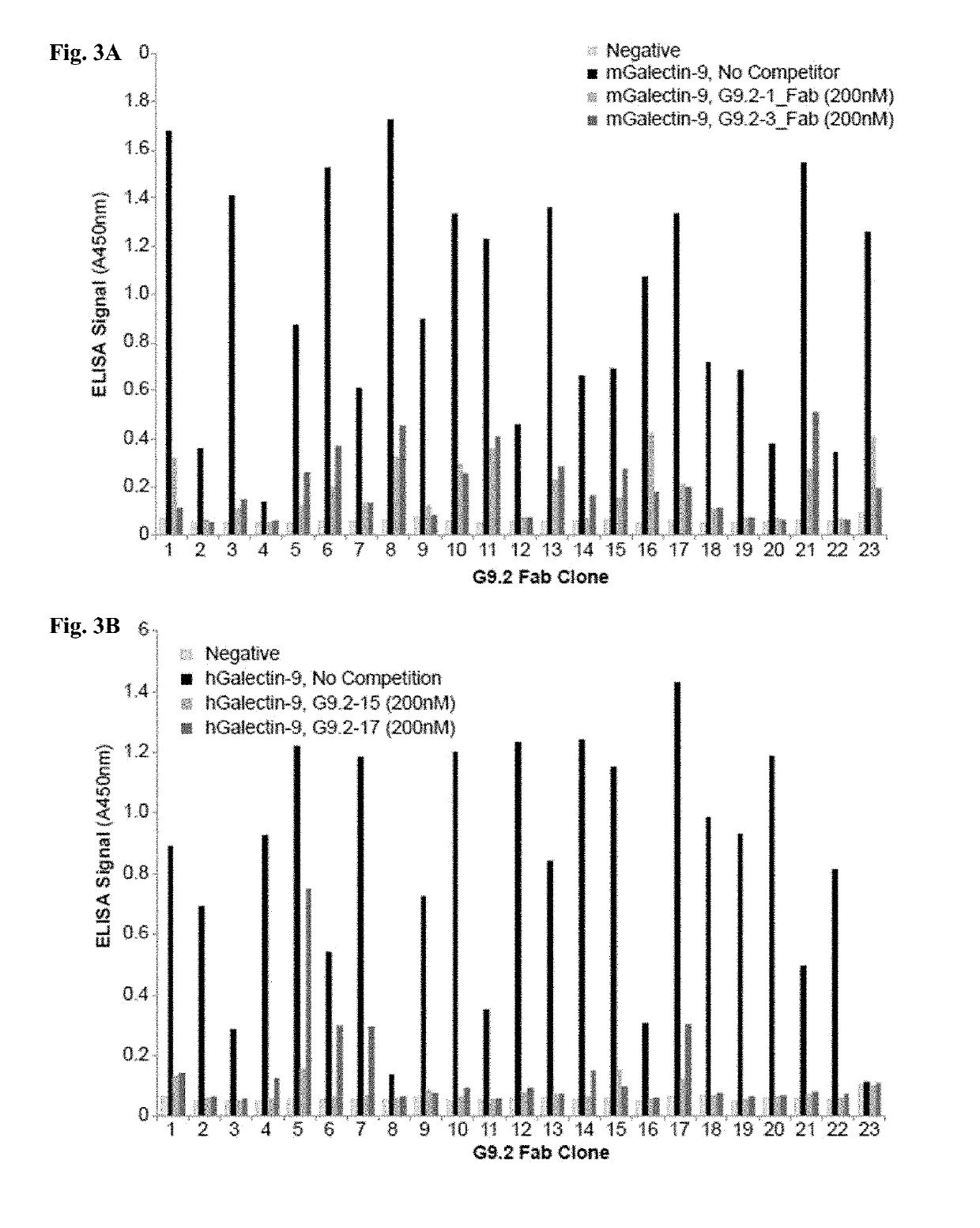Anti-galectin-9 antibodies and uses thereof
a technology of anti-galectin and antibodies, applied in the field of anti-galectin9 antibodies, can solve the problems of large refractory cancer types, and achieve the effect of suppressing galectin-9 signaling and eliminating galectin-9 positive pathologic cells
- Summary
- Abstract
- Description
- Claims
- Application Information
AI Technical Summary
Benefits of technology
Problems solved by technology
Method used
Image
Examples
example 1
n of Anti-Galectin-9 Antibodies
[0612]Codon-optimized genes encoding human Galectin-9 CRD1 (residues 1-148; SEQ ID NO: 3) and mouse Galectin-9 CRD1 (residues 1-147; SEQ ID NO: 5) were cloned as GST fusions using the pGEX vector including thrombin cleavage site and Avitag upstream of the cloned gene. Human Galectin-9 CRD2 (residues 218-355; SEQ ID NO: 4) and mouse Galectin-9 CRD2 (residues 226-353; SEQ ID NO: 6) were cloned into the pHBT vector, an IPTG inducible expression vector that contains a hexahistadine tag, Avitag and TEV cleavage site upstream of the cloned gene (Sha et al., Proc Natl Acad Sci USA, 2013, 110: 14924-14929). Human and mouse Galectin-9 CRD2 samples were then purified via Ni-Sepharose columns followed by gel filtration to apparent homogeneity and biotinylated in vitro using recombinant BirA. Human and mouse Galectin-9 CRD1 samples were purified via GST affinity chromatography followed by thrombin cleavage. Samples were further purified using gel filtration chroma...
example 2
ization of Anti-Galectin-9 Antibody Clones
[0619]Epitope Binning
[0620]Whether the antibody clones bind to distinct (non-overlapping) epitopes in Galectin-9 was examined using competition phage ELISA. The binding of all the CRD2-binding clones were significantly inhibited by pre-incubation of the purified G9.2-1, G9.2-3, G9.2-15 or G9.2-17 Fab clone (FIGS. 3A-3B), indicating that the isolated clones bind to an overlapping epitope within CRD2. Clones G9.2-15 and G9.2-17 were selected as representative clones for further characterization because of their strong binding activity and good cross-reactivity between human and mouse Galectin-9 (FIGS. 1A-1B).
[0621]Epitope Mapping
[0622]The G9.2-17 clone was selected for further epitope analysis. To determine its epitope on Galectin-9 CRD2, a series of point mutants were constructed. Their ability to bind to G9.2-17 was assayed using phage ELISA, as shown in FIG. 10A. Reductions in ELISA signal indicates sites on Galectin-9 CRD2 that are critica...
example 3
n of Anti-Gal-9 Antibodies in a Mouse Model of Ductal Adenocarcinoma (PDA)
[0637]To test the effect of treatment with an anti-Gal9 antibody to pancreatic ductal adenocarcinoma (PDA), two PDA mouse models can be used: the slowly progressive PDA model p48Cre;LSL-KrasG12D (KC) in which mice express oncogenic Kras in their pancreatic progenitor cells, and a more aggressive orthotopic PDA model utilizing tumor cells from Pdx1Cre;LSL-KrasG12D;Tp53R172H (KPC) mice, which expresses mutant Kras and p53; as well as in human PDA42,43. A combination of immunohistochemical analysis, flow cytometry, or immune-fluorescent microscopy can be used to conduct immune profiling and assess the effect of treatment with anti-galectin antibodies as compared to isotype controls. Similar techniques are used to study human samples derived from PDA patients.
[0638]In one example of a mouse study, six week-old KC mice are treated with the anti-galectin antibody, e.g., G9.2-17, to test the ability of anti-galectin ...
PUM
| Property | Measurement | Unit |
|---|---|---|
| Temperature | aaaaa | aaaaa |
| Temperature | aaaaa | aaaaa |
| Temperature | aaaaa | aaaaa |
Abstract
Description
Claims
Application Information
 Login to View More
Login to View More - R&D
- Intellectual Property
- Life Sciences
- Materials
- Tech Scout
- Unparalleled Data Quality
- Higher Quality Content
- 60% Fewer Hallucinations
Browse by: Latest US Patents, China's latest patents, Technical Efficacy Thesaurus, Application Domain, Technology Topic, Popular Technical Reports.
© 2025 PatSnap. All rights reserved.Legal|Privacy policy|Modern Slavery Act Transparency Statement|Sitemap|About US| Contact US: help@patsnap.com



